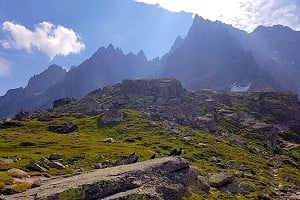
Amanda Vestergaard writes about the connection between the mountains, mountaineering and science - and how you can get involved in helping to protect the environments that we walk and climb in.
Whether it be glaciology, geology or alpine ecology, the bond between mountaineers and environmental science runs deep and it is no secret that many of the first great mountaineers were also chasing scientific pursuits. Although these mountaineer-scientists came from widely different backgrounds with varying degrees of academic training, they all had one thing in common: their love for mountain environments and being within them drove their scientific endeavours.

With the rise of citizen science projects in the past decade, opportunities for people (trained or untrained) to get involved with environmental research while out in the mountains are plentiful. For mountain recreationalists who wish to contribute to the wellbeing of our local mountain environments, these projects offer the chance to engage directly with the environmental changes taking place throughout the UK.
This article is intended as a guide on how to get involved in UK-based citizen science projects that benefit the environment and mountain-goers alike. The chosen projects have widely different research objectives and require varying degrees of commitment. However, most are compatible with your days out at the crag, in the hills or on the coast.
Science (and scientists) promoted early mountaineering
Up until the 20th century, mountain expeditions often served the dual purposes of exploring uncharted territories and conducting scientific research. Throughout the 18th and 19th centuries, scientists underook pioneering studies in the Alps, laying the groundwork for modern geology, botany, meteorology and glaciology. These scientific expeditions not only contributed knowledge to many different fields of earth science, but also sparked public interest in mountain exploration.
While the invention of modern-day mountaineering can hardly be attributed to any single individual, many of us have probably heard of Horace-Bénédict de Saussure (1740–1799) referred to as the 'father of alpinism'. As a trained academic, Saussure made significant contributions to the understanding of mountain formation and weather patterns. Meanwhile, his early attempts to summit Mont Blanc inspired many future mountaineering expeditions.
Similarly, John Tyndall's research on glaciers during his Alpine expeditions led to ground-breaking discoveries about ice physics and the role of glaciers in shaping landscapes. His writings and lectures on mountaineering and glaciology helped popularise mountain recreation, and fostered an appreciation amongst the public for the natural wonders of the Alpine landscape.
Saussure and Tyndall offer just two examples of the multiple ways mountaineering and mountain science flourished alongside each other throughout the 18th and 19th centuries. Geological studies, botanical surveys, meteorological research and cartographic expeditions all played a role in the growth and democratisation of mountain sports as we know them today.
Modern-day Mountain Science
Over time, mountaineering has developed into a distinct cultural and recreational pursuit, with its own traditions, techniques and ethics. However, its origins rooted in scientific exploration and research remain an important part of its history. As the impacts of climate change take hold in the world's mountain regions, a new era of collaboration between scientists and climbers is emerging. As keen users and frequenters of alpine environments, mountaineers serve as first-hand observers of environmental changes in the world's high-altitude regions. They for example bear witness to retreating glaciers, shifting weather patterns and changing snow and ice conditions.
A recent example of this growing collaboration between mountaineers and climate change scientists can be seen in Alex Honnold and Hazel Findlay's newest National Geographic TV series 'Arctic Ascent', in which they set out along with glaciologist Heidi Sevestre to document the effects climate change is having in the remote and fragile region of eastern Greenland. While the expedition is primarily focused on climbing and adventure, it also helps to underscore the importance of using outdoor exploration as a platform to engage people in conversations about climate change and inspire action to protect the planet's natural wonders.

Closer to home, another inspiring example is offered by Ian Cameron's beautifully poetic book, "The Vanishing Ice: Diaries of a Scottish Snow Hunter". In it, Cameron describes wild days out in the Scottish hills, alongside detailed descriptions of his work to document Scottish snow and ice cover. A self-proclaimed citizen scientist, Cameron perfectly demonstrates how it is possible to blend mountain adventure with science and environmental advocacy, even as an amateur.
As the popularity of mountain recreation grows and the environmental impact of mountain tourism becomes more and more apparent, contribution to climate change research can also act as a way for mountaineers to give back to the communities they interact with and add purpose to their expedition. This is especially the case in the Himalayas, where glacial lake outburst floods increasingly threaten the remote mountain towns that we as climbers and trekkers pass through.
The involvement of mountaineers in scientific endeavours benefits both themselves and society by contributing valuable data, observations, skills and perspectives to scientific research and conservation efforts. By bridging the gap between adventure and academia, mountaineers can play a crucial role in advancing our understanding of the natural world and addressing pressing environmental challenges.
Get Involved
In the UK, there exist myriad projects that rely on data collected by regular people in order to gain a better understanding of how the natural environment is responding to factors such as climate change, shifting land use practices and other development projects. These citizen science projects benefit greatly from the observations of people who spend extended periods of time outdoors, especially in places that are remote and hard to reach.
Here is a list of projects you can contribute to the next time you head into the hills. The type of data required by these projects can easily be collected as part of your outdoor adventure, whether it involves big mountain routes, sea cliff cragging, munro-bagging or an afternoon walk through your local landscape.
Mountains and Uplands
British Geological Survey: report a landslide
Landslides are indicative of a whole host of environmental conditions and as weather events become more extreme as a result of climate change, the frequency of landslides in the UK is expected to increase. The British Geological Survey is asking citizens to record where and when they come across a landslide, including its character (width, length, etc.). As mountaineers, we often access steeper slopes prone to these types of slides. Therefore this is a great project to contribute to and it requires no more effort than it does to log your daily climbs on UKC.
Scottish Avalanche Information Service: report an avalanche
Similar to the BGS, the Scottish Avalanche Information Service collects data from ordinary citizens to track where avalanches occur throughout Scotland, with the goal of painting a better overall picture of the country's avalanche activity. As mountaineers, we benefit massively from the efforts of the SAIS, and this is a great way to help improve safety forecasts, as well as contribute to valuable data on how winter conditions are currently changing within the UK.
Upland burning involves the controlled burning of moorland to maintain grounds for raising and hunting grouse. The boggy habitats that often define these moorlands serve as important carbon sinks, which are severely harmed should burning take place. Many of these controlled burns occur near sites loved by many for their outstanding climbing, scrambling and walking routes, making outdoor recreationalists key witnesses. The Cairngorms, the Lake District and the Yorkshire Dales are a few good examples. Help document these burns to strengthen the RSPB's claim that stronger governance is needed to stop upland burning taking place in ecologically sensitive regions.
Weather and Climate
This is an international project connected to work done by NASA to record snow-depth variability in mountain regions globally. The project has yet to gain traction in the UK and so opportunities to contribute valuable data in the form of on-the-ground snow observations are plentiful. This is especially relevant in Scotland, which has seen a worrying decrease in annual snow cover over the past ten years.
Red 'watermelon' snow-spotting
As explored in this UKC article, researchers need your help to document the prevalence of red snow blooms caused by coloured photosynthetic algae. The decreasing snow cover in Scotland means that these algal species - which also impact other organisms, lichen, moss and grassland ecosystems - are struggling for survival. The algae also increase snow melt by increasing absorbance of the sun's energy and contributing to surface melt. "Understanding the melting influence snow and ice algae might have in an already warming world might then help in developing improved models of snow and ice retreat in polar and alpine environments," Alex Thomson writes.
Record any sightings or cultural records (in poems or writing, for example) by getting in touch at [email protected] or tagging @ecosnow on X/Twitter. The Living Snow project app and iNaturalist are useful apps for these observations.
Scottish Freshwater Hub: water scarcity tracker
According to the IPCC, climate change will result in UK weather becoming more extreme, with the possibility of prolonged periods of drought throughout the summer months. SEPA (Scottish Environment Protection Agency) is therefore making an effort to document the impact of dry weather on freshwater ecosystems and their surrounding communities. To do so, SEPA is asking citizens to report signs of drought such as dry riverbeds, rivers with isolated pools of water, dead fish or exposed plants and algae.

Plants and animals
National Plant Monitoring Scheme
This project requires a bit more effort than a simple stop on the way back from the crag, but is a perfect plan-B in case of wet rock or poor conditions. To participate, you can claim a randomised 1 km square, within which you will survey 5 plots for up to 30 different indicator plants. The data collected from these plots will then help monitor changes within the UK plant population and their responses to environmental pressures. You can choose available squares on the online map. Many of the squares still needing to be surveyed are located in places loved by climbers, including Northumberland, Glencoe, the Cairngorms and north-west Scotland.
Freshwater Habitats: amphibian surveys
This amphibian survey aims to document how frogs and toads across the UK make use of freshwater ponds for mating and spawning, in order to identify and prevent potential stressors. It is the perfect project to contribute to the next time you sit to have your lunch by a mountain lochan. Simply indicate the location of your observation using an OS grid reference, or the what3words app.
GOV UK: report dead wild birds
There exists a seemingly endless list of citizen science projects in the UK involving the monitoring and tracking of birds. As climbers, we often access hard-to-reach areas favoured by birds for mating and nesting. Though such areas should be avoided during these key seasons, they also offer a great opportunity to contribute to bird population monitoring, for example by reporting dead wild birds to the UK government. This will help authorities keep track of potential crimes, how diseases and pests are spreading and how these are affecting national bird populations.
Marine Environment
There is no better place to sit on the lookout for whales than from a sea cliff belay. The Hebridean Whale and Dolphin Trust has been monitoring Scotland's cetacean populations since 2002, with the hope of being able to influence marine mammal conservation efforts. By contributing to the trust's whale tracking data, you are helping build a dataset that can be used to lobby for larger, stricter and more accurately located marine protected areas.
This is another project that involves a bit more time and planning to be carried out, but it is one that benefits hugely from data collected on the remote beaches we often use to access more adventurous sea cliffs and sea stacks. If you are lucky enough to be camping at the beach, it could be a great rest-day activity. The Big Microplastic Survey is a global project based in the UK, designed to further our understanding of microplastic distribution and composition. Eventually it is hoped that the project can help in the creation of science-based policies, and hereby limit future microplastic pollution.
These projects represent a small sample of the many citizen science initiatives taking place throughout the UK, not to mention the endless sea of volunteering opportunities. If you are involved in or know of projects that could interest the rest of the UKC community, feel free to share them in the forums.

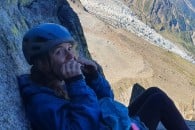

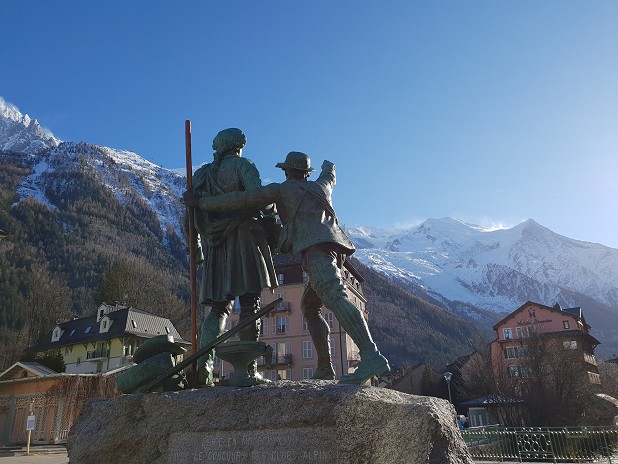


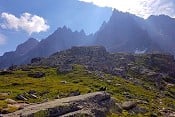
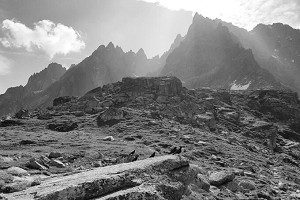
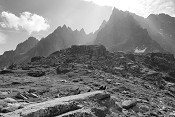

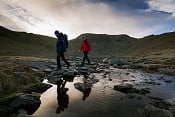


Comments
That's a great round up! The plant survey sounds really fun. Another one I came across last year was the Mountain Heights project: https://munro-biodiversity.hutton.ac.uk/
Theyre trying to map whats in mountain-top soils using an eDNA approach. You adopt a munro, they send you a sampling pack and coords, and you grab a scoop of soil whilst at the top! I think they still have a few hills that need volunteers?
iNaturalist is amazing. Citizen science on a mega scale! And it makes IDing things so accessible. I never thought I'd get excited about liverworts, and then I got that app..
Another good citizen science initiated running this week. Perfect for that 15 minutes between burns or hilltop lunch stop!
https://bigbutterflycount.butterfly-conservation.org/